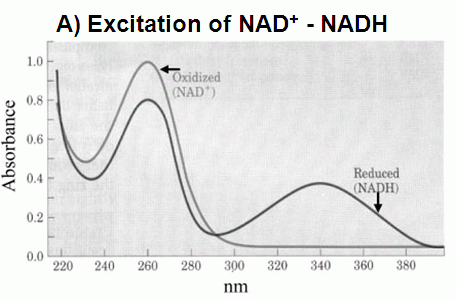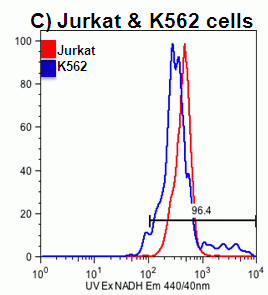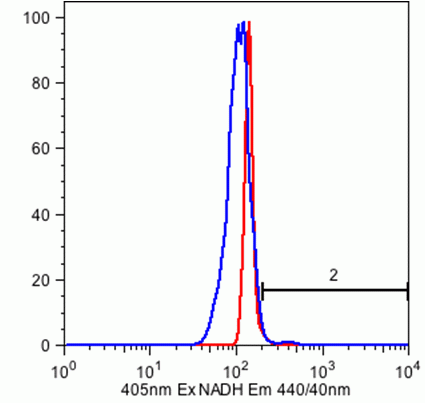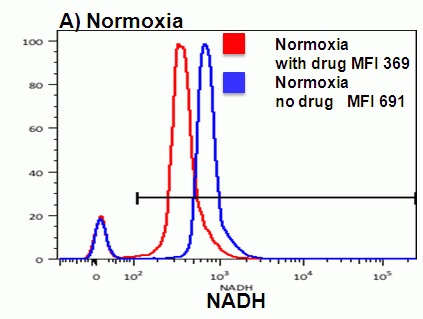NADH or nicotinamide adenine dinucleotide is a co-enzyme which acts as an electron carrier in the process of oxidative phosphorylation carried out on the inner mitochondrial membrane, see figure for chemical structure. NADH is one of the main components which generates cellular autofluorescence observed as a problem in most flow cytometric assays. However NADH can be measured flow cytometrically after excitation with a UV laser with a main emission peak at 470nm. Measurement of NADH levels can be used to monitor levels of oxidative phosphorylation (Mayevsky, Rogatsky, Am J Physiol Cell Physiol, p615-640, 2007).
Fluorescent properties of NADH
The fluorescent properties of NADH varies according to its oxidized state, NAD+ is not fluorescent after UV excitation while NADH emits at 470nm, see figures chemical reaction or excitation and emission spectra of NADH.
NADH Biochemical Pathway
Mitochondrial NADH is oxidized to NAD+ by the electron transport chain which pumps protons across the inner mitochondrial membrane and generates ATP via the process of oxidative phosphorylation, see figure below
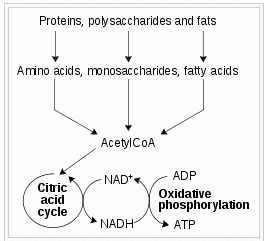
NADH excitation by Violet Diodes
NADH is not excited by a Violet Diode (405nm) as can be seen from the figure below when compared to non-fluorescent bead particles excited at 405nm, see figure.
Comparison of cell lines
The T-cell leukemia, Jurkat NADH levels can be compared to the erythromyeloid leukemia cell, K562, see figure.
Effect of oxygen levels upon NADH
The effect of oxygen levels upon the efficacy of drug activity upon cellular NADH was compared using the rectal carcinoma cell line, C80. Cells show great differences in the metabolic rate or NADH levels when under normoxic or hypoxic conditions, with hypoxia increasing NADH levels nearly four fold compared to cells grown under normoxic conditions. The effect of drugs on cellular NADH levels under normoxic and hypoxic conditions was to reduce NADH by 50% and 75% respectively, see figure.

